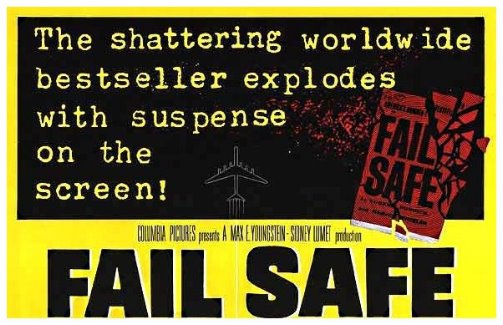With the war in Ukraine raging, and Putin threatening to use nuclear weapons, the world is moving ever closer to complete annihilation. According to the Bulletin of the Atomic Scientists website, "This year, the Science and Security Board of the Bulletin of the Atomic Scientists moves the hands of the Doomsday Clock forward, largely (though not exclusively) because of the mounting dangers of the war in Ukraine. The Clock now stands at 90 seconds to midnight – the closest to global catastrophe it has ever been. The war in Ukraine may enter a second horrifying year, with both sides convinced they can win. Ukraine’s sovereignty and broader European security arrangements that have largely held since the end of World War II are at stake. Also, Russia’s war on Ukraine has raised profound questions about how states interact, eroding norms of international conduct that underpin successful responses to a variety of global risks. And worst of all, Russia’s thinly veiled threats to use nuclear weapons remind the world that escalation of the conflict – by accident, intention, or miscalculation – is a terrible risk. The possibility that the conflict could spin out of anyone’s control remains high."
During times like these, it is important to remember that he have been on the brink of nuclear war before (in 1962) and being of a certain age, I think the anti-war films from that era are essential viewing for anyone concerned about our future on this planet, if we have one. One such film that remains topical both in its content and in its message is the 1964 classic Fail Safe, a movie the Pentagon didn’t want you to see, then or even now, despite its age. I have seen George Clooney’s remake, but it doesn’t hold a candle next to the original about how a system malfunction sends a group of Vindicator bombers (actually, B-58 Hustlers in the film) on a mission to nuke Moscow and the efforts of the President and USAF to get them to return to base and avoid starting World War III. Naturally the Pentagon wanted nothing to do with this film because they want the public to think the USAF is infallible, both in terms of personnel and systems. The reality is quite different. I know of a mistake during an exercise in which a unit was supposed to fire simulated missiles at the Soviet Union, but somebody goofed and they theoretically nuked Poland instead!

In his book Operation Hollywood: How The Pentagon Shapes And Censors The Movies, author David L. Robb describes the extent the Pentagon went to in terms of censorship. It wasn’t just a matter of blocking access to official footage of USAF aircraft, either. As he put it: "In 1964… Don Baruch [who was in charge of the Pentagon’s film office], refused to let the producers of Fail Safe have access to stock footage of U.S. warplanes they needed for their film. The film, which was one of the Pentagon’s least favorite movies of all time, starred Henry Fonda as the President of the United States trying to recall American jets from a mission that a computer malfunction has sent them on to drop nuclear bombs on Russia. The Pentagon, saying that such a scenario was virtually impossible, not only refused to give director Sidney Lumet access to stock footage in its files, but also tried to get commercial film libraries not to give him any footage of American bombers in flight. Lumet wanted to show a whole squadron of planes in the air, but in the end, he could only scrounge together about one hundred feet of film of a single airplane, a Convair B-58 Hustler, that he had to use over and over." (Emphasis added. Kindle Locations 1101-1106)
Finally, "Jonathan Turley, a professor of constitutional law at George Washington University, believes that the denial of unclassified stock footage to filmmakers whose projects don’t meet with the Pentagon’s approval raises serious constitutional issues. ‘Access to standard governmental footage has a significant affect on speech,’ he says. ‘The government can always argue that there are other ways of filming a war scene without actual access to an aircraft carrier. Hollywood is rather adept at creating such scenes. However, access to standard military footage constitutes a rather significant barrier and there is little countervailing governmental interest. The government can certainly argue that some forms of government assistance require a significant effort by the military – for example, access to an active aircraft carrier. But they can hardly make that case when there is a request for access to an area like the Presidio, or access to standard file footage of military equipment.’” (Kindle Locations 1107-1112).
This certainly still goes on today. If this bothers you, go ahead and watch a good anti-war film that the Pentagon tried to "cancel" and think about what you won’t see in films made with the cooperation of the Pentagon, like Top Gun.
Notes
Bulletin of the Atomic Scientists website.
David L. Robb. Operation Hollywood: How the Pentagon Shapes and Censors the Movies. Prometheus Books. Kindle Edition.
Roger Thompson is a research fellow at Dalhousie University’s Centre for the Study of Security and Development, the author of Lessons Not Learned: The US Navy’s Status Quo Culture, and a former researcher at Canada’s National Defence Headquarters. You can reach him at published1995@outlook.com.


